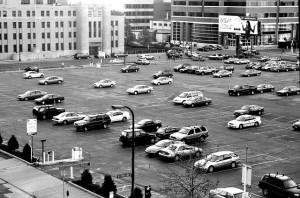Writing in MinnPost, Marlys Harris asks why (seemingly) nothing is getting done in Minneapolis. She comes up with three broad reasons: a negative attitude towards new development, economic justifications that don’t pencil out for new projects, and the impact of zoning and land use regulations – often unintended impacts or perverse outcomes. While all three are certainly factors, the real interesting implication is the interplay between them: as an example, regulations that dictate long and uncertain processes, enabling those opposed to new development to organize in opposition, thereby adding time and cost to a building project to the point where it’s no longer feasible.
In the comments, Max Musicant offers an example of these chain reactions on the regulatory side:
[T]he zoning code is very often in conflict with how multi-story buildings are actually built – which also drives the almost constant demand for variances. If one wants to build a multi-story building, you are required to provide an elevator. If you need an elevator, you need to build 4-6 stories to spread out the cost. If you are building that high, you will likely be required to build parking on-site. If you have to build parking on-site in an urban location, it will have to be underground – which is very expensive. All of this can be avoided only if 1) you build one story suburban style or 2) your price points are affordable only to the wealthy.
The parking requirements are particularly onerous. Oregon Public Broadcasting took note of parking-less apartment building projects in Portland back in August. New buildings are going up without off-street parking, taking advantage of a change in the zoning code that allows exemptions from parking requirements under certain conditions. While the article’s narrative focuses on the kinds of people who would live without a car or without a designated parking space, this cultural focus is misplaced – as Max Musicant noted later in his comment, these kind of walk-up apartment buildings without off-street parking were commonly constructed in American cities in the not-so-distant past.
The real takeaway from the OPB piece isn’t about the behavior of the tenants, but of the impact on the bottom line of the builders:
One of those developers is Dave Mullens with the Urban Development Group. He opened the Irvington Garden in a close-in Northeast Portland neighborhood last year. It’s 50 units with no parking places.
“The cost of parking would make building this type of project on this location unaffordable,” Mullens says.
Mullens calls the difference “tremendous.”
“Parking a site is the difference between a $750 apartment and a $1,200 apartment. Or, the difference between apartments and condos,” he says.
In other words, these kinds of regulations have severe costs. Taking Mullens’s price figure at face value, it’s not hard to see how removing a requirement like this would help market rate development target demand at lower price points. Likewise, it’s not hard to see how seemingly narrowly-focused and well-intentioned regulations can have much broader consequences when layered with other constraints.
Of course, these points are all on the micro scale of an individual project, but the macro scale also matters. The regulations have to allow the market to increase supply in order to meet demand – otherwise bad things happen. In the Washington Business Journal, Montgomery and Fairfax counties in metropolitan DC are concerned about housing becoming unaffordable even for those with six figure incomes.
It’s not until the end that simply relaxing zoning requirements to a) increase supply, or b) lower the cost of development (see the parking requirement discussion) is mentioned. The article does not mention option c), all of the above. Since there would still be a need for deeply affordable dwelling units, relaxing or eliminating parking requirements would be a good place to start in striking the balance between good, well-intentioned, and effective regulations and an efficient marketplace for new development.






No hay comentarios:
Publicar un comentario